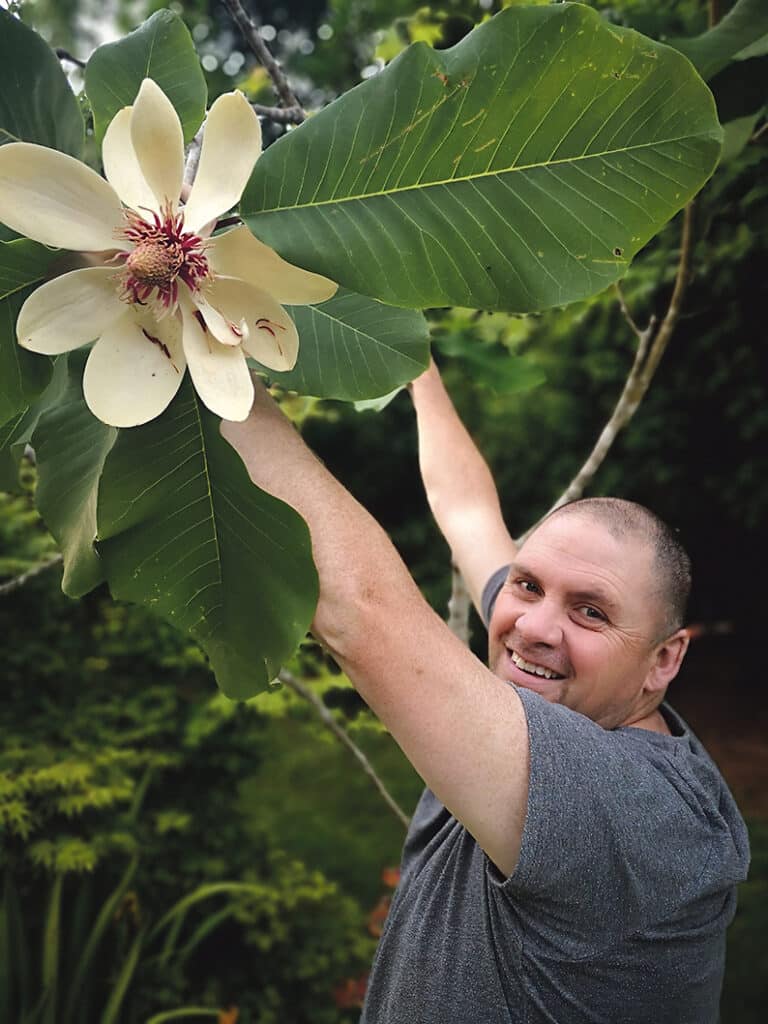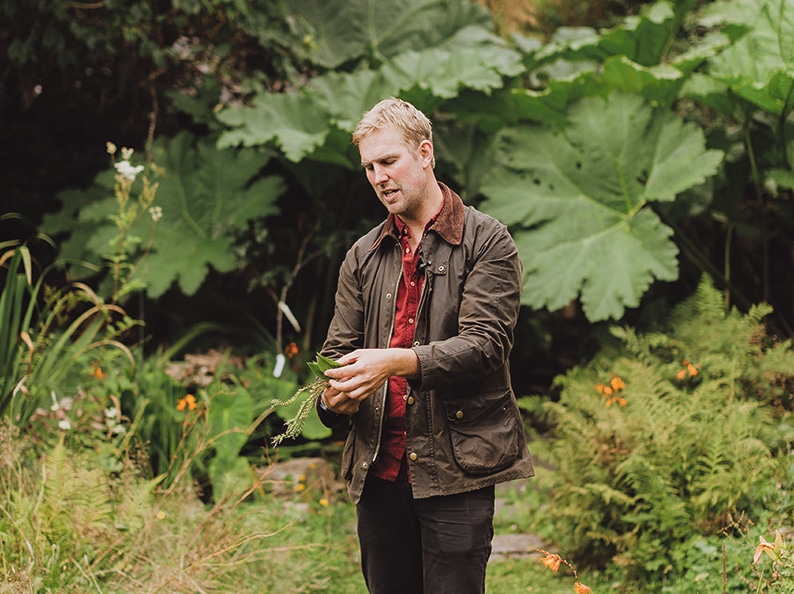Magnolias are beautiful, glamourous plants, with their tulip-shaped, goblet-shaped or strap-petalled flowers. They are also very ancient; one of the first flowering plants on earth, they pre-date bees and their open flowers are pollinated by beetles. Mattie Keane from Future Forest shares how to choose and care for them.

Some magnolias are deciduous; these are mainly spring-flowering, usually on the shapely, open, bare branches, a glorious sight to behold in the spring garden. Evergreen magnolias usually flower in summer, including the beautiful, cream-flowered bull-bay, M. grandiflora, best trained on a warm wall.
There are several myths about magnolias. One is that they grow very large – and you would certainly need a big garden to grow M. campbellii at 50’/15m – but there are many, many, smaller cultivars or species ideal for smaller gardens, like M. stellata with starry white flowers, or the ‘Little Girl’ series, perhaps the best of which is ‘Susan’, with narrow, tulip-shaped crimson petals, paler within. And there are magnolias like Fairy Blush and Fairy White, which are small enough to be grown in large containers, as is M. stellata.
Another is that they must have a slightly acid soil, but there are cultivars that can be grown on a moist, slightly alkaline soil, like M. stellata, M. x loebneri ‘Leonard Messel’ or M. seiboldii (it is true that magnolias don’t thrive on thin, dry, chalky soils). Try a small cultivar in soil-based, ericaceous compost in a large container if your soil is very alkaline, dry or chalky, and keep it well watered.
Another myth is that they take forever to flower, but this is not the case with modern cultivars, especially grafted ones.
Some magnolias are taller and narrower, others are rounded bushes, and others yet are trees. Not all are pink, white or purple, there are soft yellow ones too, like M. Elizabeth. In fact, there’s one for every garden.
How to grow magnolias
The ideal soil for magnolias is fertile, moisture-retentive, and slightly acidic to neutral. If your soil is not that good, excavate a wide hole and dig in plenty of organic matter before planting, then mulch well to improve moisture-retentiveness and fertility, keeping the mulch clear of the stem(s). If the soil is very heavy, add some grit. Be sure to water in dry spells.
Choose your site carefully. Magnolias are slow-growing, but check the eventual size of your magnolia, as they don’t like to be cramped, and resent hard pruning. The site should be sheltered, and in full sun. Magnolias are very hardy, but early-flowering cultivars can lose their flowers to frosts, so don’t plant in a frost-pocket, and choose later-flowering magnolias if your garden is a cold one – the lovely M. soulangeana hybrids often flower as late as May.
Choose a lively specimen showing signs of growth, and that is not pot-bound. Be sure to plant grafted specimens to the exact level it was in the pot – the graft must be clear of the soil or it will rot. And be careful not to mulch too thickly near the stem, so you don’t bury the graft.
Magnolias are relatively pest- and disease-free, but if your garden is raided by rabbits, protect the trunk with wire-netting or a tree-guard (surround shrubby magnolias with wire netting attached to posts). Young trees can lose leaves to slug attack, so check the soil regularly and remove the little blighters.
Magnolias are generally shapely plants, and they dislike pruning as they can bleed sap, but if you need to remove a badly placed branch, prune deciduous cultivars in midsummer, after flowering is over.
Good species and
cultivars:
Small shrubby magnolias
• M. stellata: deciduous, rounded bushy habit, strappy white petals 5-8’/1.5-2.5m x 8-13’/2.5-4m
• M. Fairy White: semi-evergreen, strappy white petals, 8’5”/2.6m x 8’/2.5m, tolerates clipping so can be used for hedging.
• M. Fairy Blush: semi-evergreen, strappy shell-pink petals, 8’6”/2.6m x 8’/2.5m
Medium-sized magnolias
• M. Susan AGM: deciduous, crimson-purple tulip-shaped flowers, 13’/4m x 10’/3m
• M. George Henry Kern AGM: deciduous, pyramidal habit, scented soft pink goblet-shaped flowers, 13’/4m x 8’/2.5m
• M. stellata Royal Star AGM: deciduous, strap-shaped petals white flushed pink, 10-13’/3-4m x 10-13’/3-4m
• M. x loebneri Leonard Messel AGM: deciduous, lilac-pink goblet-shaped flowers, 26’/8m x 20’/6m – a wonderful cultivar
• M. x soulangeana: the classic – deciduous, tulip-shaped, white to rose-pink flowers, paler inside, 20’/6m x 20’/6m
• M. Black Tulip: small deciduous tree, red-purple tulip-shaped flowers on bare branches, 20’/6m x 10’/3m.
Larger magnolias
• M. x brooklynensis Yellow Bird: One of the best yellow flowering magnolias, grows slowly to 33ft/10m
• M. Elizabeth AGM: deciduous, goblet-shaped soft yellow flowers, 33’/10m x 20’/6m
• M. grandiflora Gallosiniensis: Slow growing, large evergreen tree, to 50’/15m with soft creamy white and highly scented flowers in summer.
• M. Obovata: creamy-white flowers with a pinkish tinge with a strong, delicious fragrance in summer, really tall-growing, known to get up to 100’ /30m
Future Forests stock a wide range of Magnolias and have the best availability in March; you can find the list on the website www.futureforests.ie/collections/magnolias
The nursery is open to visitors from Thursday to Saturday, 10am to 5pm and on Sundays from 12 to 5pm, The Coffee Bee is open for hot drinks and sweet treats too.


